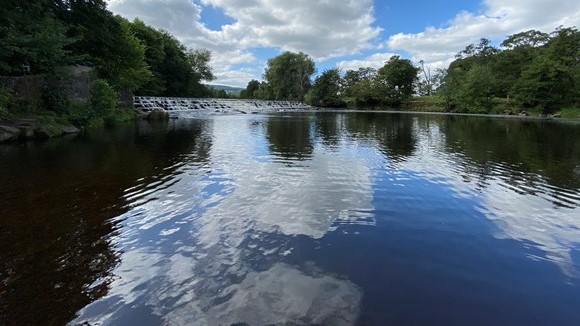Ultraviolet disinfection measures have been added to Yorkshire Water’s treatment works at Draughton and Beamsley to help improve water quality at the designated bathing water area in Ilkley and the river Wharfe.
The installation will provide an additional layer of treatment for the final effluent that is released back to the river following treatment of wastewater at the sites.
Grassington treatment works will also have UV treatment but work to complete the installation has been disrupted due to Oystercatchers nesting and breeding near the treatment works.
Yorkshire Water is working in partnership with BarhaleDoosan JV and Xylem to install the treatment method at the three treatment works. The sustainable and chemical-free process uses UV-C to break down chemical structures within microbes present in final effluent returned to the environment, which means they are unable to reproduce and cause infections in people.
The process is expected to lead to the inactivation of 99.99% of targeted organisms before discharge to the environment, improving water quality at the bathing water in Ilkley and the 25km upstream to Grassington.
Ben Roche, director of wastewater at Yorkshire Water, said: “We are committed to playing our part to improve water quality within the river Wharfe. Our modelling indicated disinfection treatment at our Draughton, Beamsley and Grassington works would help contribute to improvements along the Wharfe and into the inland bathing water area.
“Following the modelling, we have moved quickly to install disinfection which will be operational during this year’s bathing water season, and we are continuing to investigate the best solution for permanent disinfection treatment at the sites.
“This project forms part of a major investment in our treatment works and sewer network upstream of the designated bathing water area in Ilkley. We have completed our upgrade of Rivadale CSO and made progress with our misconnections investigation in the area, identifying a number of properties where wastewater has been incorrectly connected to surface water systems and is entering the watercourses.
“While UV disinfection and the other measures we have outlined in our investment plan will help to improve water quality, they alone will not lead to an improvement in bathing water standards. Our modelling and citizen science work indicate pollution is entering the watercourses from a variety of sources and it is important other landowners and stakeholders take action to ensure water quality is improved, with the aim of improving the bathing water classification.”



